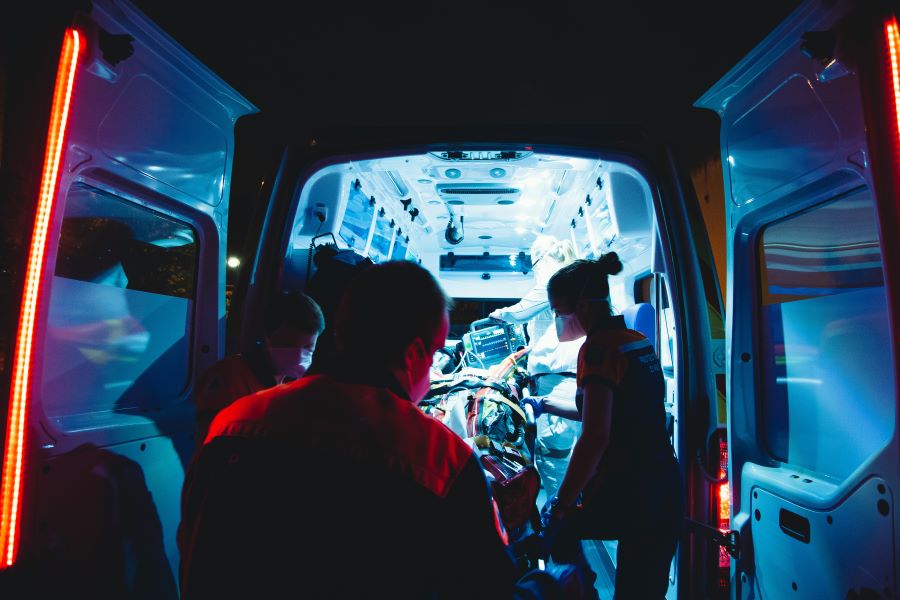
New Use Cases for Healthcare Simulation, Part 1: EMS Simulation Labs
What do you need to outfit an ambulance for EMS education?
When we consider the educational role of healthcare simulation, the traditional use cases are for nursing, physician, and PA students in training hospitals and universities in Houston, TX, and other major cities across the U.S. However, simulation technology is incredibly sophisticated and vastly adaptable to help medical professionals of all types gain hands-on practice and experience in a safe, simulated environment.
Over the next few months, we’ll be embarking on a blog series to explore the expansion of simulation technology and new use cases for future healthcare professionals.
Today, we’re starting with EMS simulation labs built in ambulances and other environments where EMS professionals deliver critical care to patients. Outfitting an ambulance for EMS education requires thinking through several unique considerations. We’re here to help guide you through them — keep reading to learn more.
SEE ALSO: How to Build Your Own Simulation Education Pathway
Portable Systems
EMS professionals provide life-saving care in multiple locations — accident scenes, ambulances, ERs, and trauma rooms, to name a few. Exposing students to different care environments during their education and training is valuable to prepare them for real-life emergencies.
At Level 3 Audiovisual, we’ve designed portable simulation systems that facilitate high-fidelity sim labs in unique environments, like ambulances and ERs. As students move from an accident scene to the ambulance to the ER during a simulated scenario, portable components can follow to ensure an uninterrupted experience.
Here’s how we achieve optimal portability while maintaining stability for EMS labs:
- Cameras and mics. First, we outfit an ambulance with professional cameras and hardwired connections. We know many people want to use wireless technology for cameras, but wireless connections simply aren’t stable enough and frequently lead to delays, buffering, and timeouts. Then, we supplement our hardwired solutions with additional cameras and mics that can be taken and used outside the ambulance if students move locations during a scenario.
- Audio. Clear, intelligible audio is critical, especially in simulation environments like ambulances with a lot of road and environmental ambient sound. We use digital audio systems with noise cancellation technology to reduce (and sometimes eliminate) background noises that could lead to poor playback of a recorded simulation.
- Control station. Our control stations are portable enough to move from location to location with a simulation technician or instructor. For example, simulation techs can set up the control station in the passenger seat of an ambulance, outside the ambulance, or in the back with the students. Then, using a laptop or touchscreen tablet, techs and instructors can start labs, take notes, adjust cameras, play sound files, and show images just as they would in a stationary control room.
Wi-Fi and Remote Viewing
Ambulances are tight, cramped quarters that don’t allow much wiggle room for onlookers and observers. We design our ambulance labs with hotspots and built-in Wi-Fi to accommodate remote and on-site viewing. Sim techs and instructors can use a standard conferencing app to send invites to individuals who can join remotely for a live viewing of the scenario. Additionally, a large flatscreen TV is installed outside the ambulance to project a live viewing to an audience of prospective students, faculty members, and other medical students.
Recording and Processing
Once a scenario is over, instructors and techs will need to send the complete recording to a debriefing room, faculty members, and/or students. Our systems have a lightning-fast video processing time of under two minutes so that techs can process and send the recording before stepping out of the ambulance. Once the video is processed, technicians can use a hotspot or built-in Wi-Fi to send the recording to an email or cloud storage platform.
Level 3 Audiovisual Delivers Turnkey Simulation Solutions
Level 3 Audiovisual has partnered with Frazer, Ltd., a company specializing in supplying EMS vehicles for licensing and use as mobile clinics, mobile stroke units, and ambulance simulation labs. Level 3 takes care of everything else. Our turnkey simulation solutions include professional design and installation, training, and long-term support.
If you’re interested in learning more about healthcare simulation solutions for your facility or training program, reach out to us online or click the chat box below to connect instantly.

